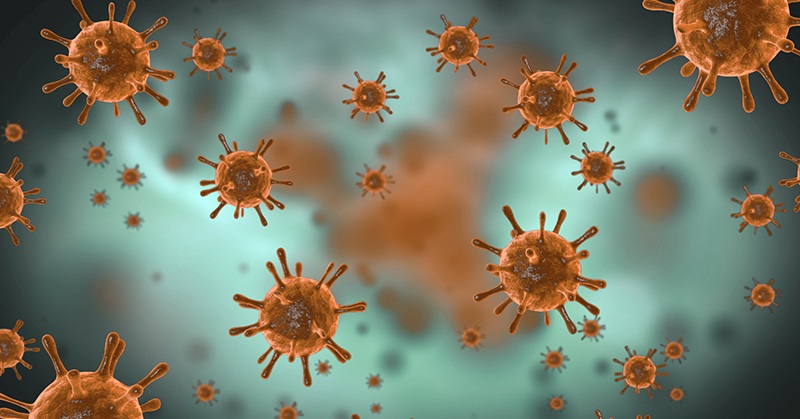When too many of the wrong kind of microbes take root in the gut, it causes an imbalance that can lead to a wide variety of health disorders.
Could this also occur in the brain?
An international group of scientists certainly think so and they’ve set up a project called the Alzheimer’s Pathobiome Initiative to find out. Their new study suggests they’re on the right track hunting down disease-causing “brain bugs.”
While abnormal amyloid accumulation in the brain is a hallmark of Alzheimer’s disease, decades of clinical trials focused on drugs targeting these rogue proteins have mostly ended in failure.
As we’ve reported here many times before, this shouldn’t really be surprising because the volume of amyloid plaques in the brain doesn’t always correlate with the level of cognitive decline. In addition, up to 30 percent of seniors have substantial amounts of amyloid accumulation while remaining as sharp as a tack!
The buildup of amyloid to explain the cause of Alzheimer’s is therefore lacking. What’s more likely, as we’ll see later, is that the buildup of amyloid is a response to an infectious agent.
The Brain Microbiome
An alternative explanation for the disease is that just as the gut is home to multiple species of microbes – the microbiome – the same holds true for the brain. And just as too many “bad” microbes in the gut can lead to illness, so in the brain this “pathobiome” could result in neurodegenerative diseases.
The idea of a brain microbiome wasn’t considered a possibility until 2013 when neurologists from the University of Alberta, Canada provided evidence for the presence of multiple bacteria in healthy and diseased human brains.
Their work has now been taken further by scientists at Drexel University College of Medicine, Philadelphia, one of the groups that’s part of the Alzheimer’s Pathobiome Initiative.
Pathogenic Bacteria Predict Alzheimer’s
For their research they used 130 samples taken from 32 donated brains: half with Alzheimer’s and half from age-matched Alzheimer’s-free controls. The samples were taken from the frontal and temporal lobes and the entorhinal cortex, all areas that are damaged by the disease. They then applied a breakthrough technique to the samples called full-length 16s ribosomal RNA gene sequencing that allows scientists to detect the presence of bacteria.
The scientists found evidence of bacterial species in every sample, supporting the brain microbiome theory, but the microbes they found in the two groups were not the same.
The Alzheimer’s brains showed profoundly different bacterial profiles compared to the controls. In almost all of them, disease-specific sets of bacteria were found. The Drexel scientists believe this finding suggests these groups of bacteria strongly predict the disease.
They theorize that the brain starts out with a healthy microbiome, but as the disease develops, pathogenic microbes overpower and replace Comamonas sp. bacteria, which are associated with a dementia-free brain, with the eventual emergence of the Alzheimer’s pathobiome.
More Infections – Higher Risk
Garth Ehrlich, co-senior author of the paper published in the journal Frontiers In Cellular And Infection Microbiology in September, said: “Perhaps destruction of the Comamonas bacteria, part of a healthy brain microbiome, is the first sign of impending dementia.
“We’re now coming up with the questions to guide future studies, but the hypotheses are many. The culprit could be bacteria or something else – like fungi, parasites, or viruses – at the same time.”
In fact, all scientists contributing to the Alzheimer’s Pathobiome Initiative are looking beyond amyloid as the cause of the disease.
Since this protein has strong antimicrobial properties, it’s very likely recruited to deal with one or more pathogens. The other hallmark of the disease, tau protein tangles, has also been shown to help stop the spread of pathogens in the brain.
Multiple studies have now shown the presence of bacteria in Alzheimer’s-afflicted brains as they have found the presence of viruses, especially the herpes virus.
Professor Ehrlich said Alzheimer’s is a complex disease and probably involves the interaction of many systems, but he believes “the more infections you get in the brain, the higher your risk of Alzheimer’s. There are many pathogens that likely increase the risk. This pathobiome is not the whole answer, but it’s a piece of the puzzle.”
My Takeaway
I’m not surprised at the findings. We’ve reported on the presence of viral infections in Alzheimer’s patients in the past. Of course, this is early-stage work, and the existence of a brain microbiome remains theoretical at this point.
However, the Alzheimer’s Pathobiome Initiative will not only be researching this concept but will be using multiple scientific techniques to discover whether microbial infections play a causal role in Alzheimer’s disease, and if so, they will lead the search to find effective antimicrobial treatments.
Best Regards,
The Awakening From Alzheimer’s Team
The Alzheimer’s Pathobiome Initiative https://www.alzpi.org/
Evidence supportive of a bacterial component in the etiology for Alzheimer’s disease and for a temporal-spatial development of a pathogenic microbiome in the brain https://www.frontiersin.org/articles/10.3389/fcimb.2023.1123228/full







